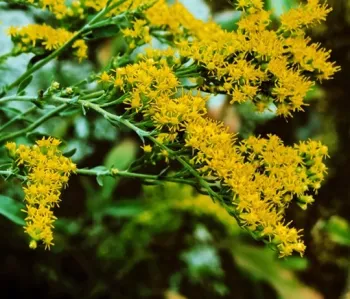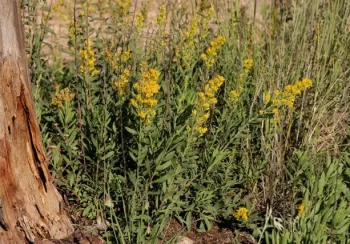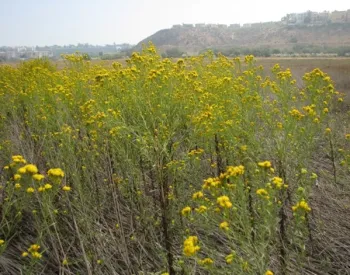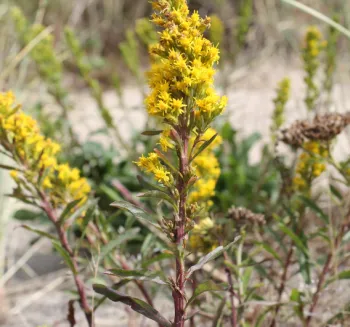Goldenrod (Solidago) is a striking California native perennial that’s easy to grow in sunny gardens. A member of the Asteraceae (sunflower) family, it is recognizable by its masses of bright yellow flowers that bloom profusely in late summer and fall. The cheery blooms are a delight in the garden as many other perennials are fading this time of year.
A word of caution
Some gardeners find that goldenrod is too much of a good thing. Why? Because it tends to creep. It does this in two ways: by underground rhizomes and by dispersing seeds after its blooms have died back. Your best strategy? If you plant Solidago, be sure to give it plenty of room to roam. To prevent spreading seeds, clip off the dried flowering stalks (and the dry foliage) after bloom.
Many goldenrods to choose from
There are a number of Solidago species and varieties -- some native to California and others native to nearby areas such as the southwest region of the US. All are relatively easy to grow and sport bright yellow flowers. Click here to see a handful of goldenrods. (Click on each photo to see more images and details.)
Solidago spotlight: four native species to consider for your garden

California goldenrod (Solidago velutina ssp. californica) grows fast and produces many showy flower spikes up to 5 feet tall. Birds and pollinating insects love this plant. It is found throughout California in open grassy places up to an elevation of 7,500 feet. It is a very garden-tolerant, easy plant that thrives in a variety of soil types in full sun to partial shade. It likes to be wet in winter and spring and dry in summer; however, it can tolerate some extra summer water. Be aware that California goldenrod may become invasive due to its ability to spread aggressively.

Threenerve goldenrod (Solidago velutina) is widespread in western North America. It is in almost every county in California. Threenerve goldenrod is winter dormant and is best used where a wild look is desired. The yellow-gold flowers in late summer are showy and attract a large number of insects as well as some birds. It grows at a moderate rate up to 3 feet tall. It requires little care and is not picky about soil, dry summers, or cold winters. It is visited by bats, bees, caterpillars, and butterflies. Photo: Flickr, Cecilia Alexander

Western goldenrod (Euthamia occidentalis), also called western goldentop, is a deciduous perennial native to most of the western states. It is most widespread in California where it is primarily found at elevations below 5,000 feet in damp areas along rivers and streams, irrigation ditches, meadows, tidal channels, and other wetlands. It is a spreading plant with thin, tall, branched stems with long, narrow, gray-green leaves. It typically grows 4 to 6 feet tall and can be used for erosion control and bank stabilization. This variety needs supplemental water in summer and must stay moist. It attracts bees and other pollinators. Photo: Flickr, Jonathan Coffin

Coast goldenrod (Solidago spathulata), also called dune goldenrod, is native to coastal regions of Oregon and California on sand dunes and hillsides overlooking the Pacific Ocean. It grows up to 20 inches tall and has a branching underground caudex (swollen woody stem or root). One plant can produce as many as 100 small yellow flower heads in a branching array. This species of Solidago is used as a groundcover or lawn alternative. Coast goldenrod is visited by bats, bees, caterpillars, and butterflies. Photo: Flickr, Steve Sullivan

